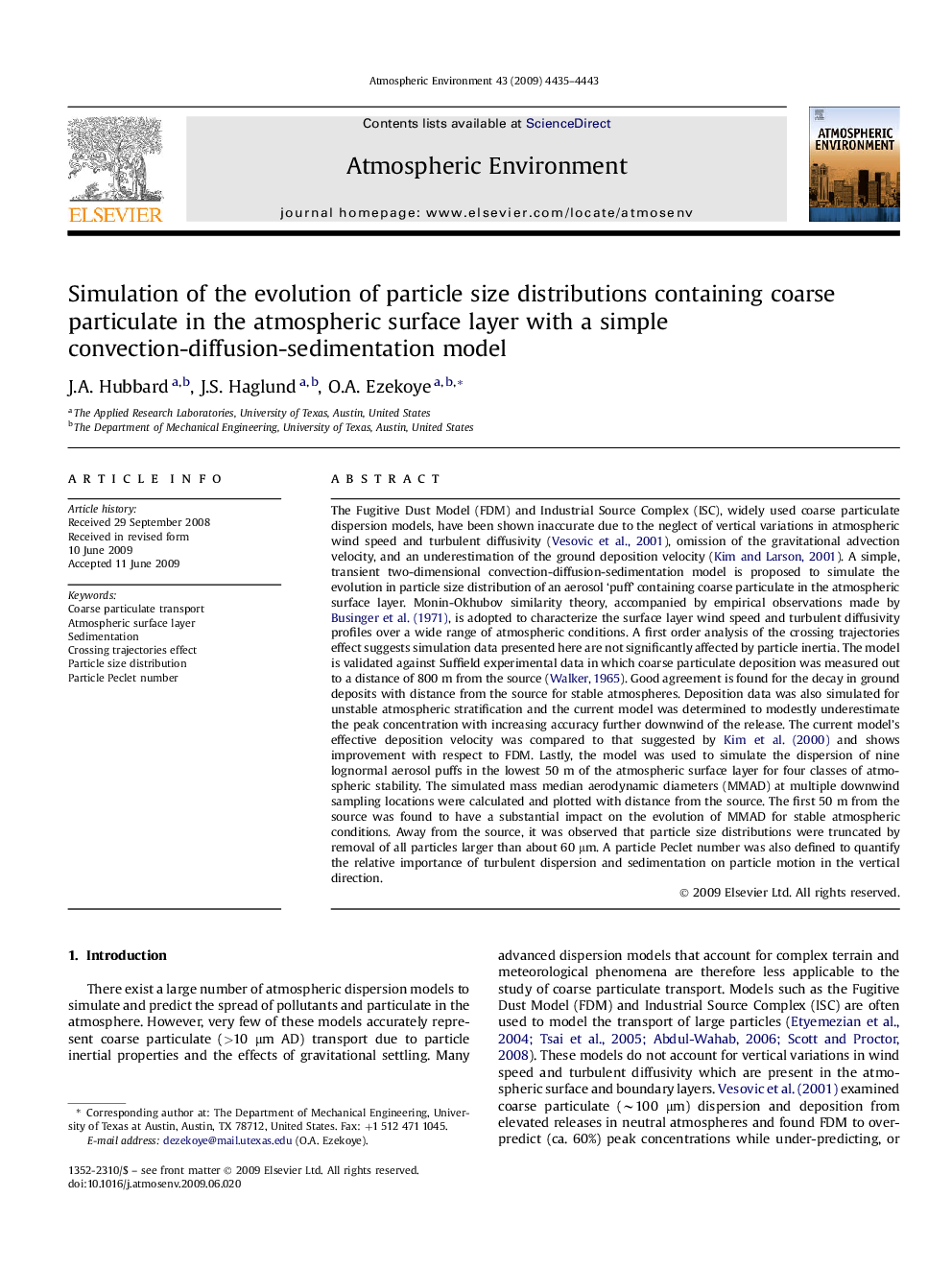| کد مقاله | کد نشریه | سال انتشار | مقاله انگلیسی | نسخه تمام متن |
|---|---|---|---|---|
| 4441355 | 1311103 | 2009 | 9 صفحه PDF | دانلود رایگان |

The Fugitive Dust Model (FDM) and Industrial Source Complex (ISC), widely used coarse particulate dispersion models, have been shown inaccurate due to the neglect of vertical variations in atmospheric wind speed and turbulent diffusivity (Vesovic et al., 2001), omission of the gravitational advection velocity, and an underestimation of the ground deposition velocity (Kim and Larson, 2001). A simple, transient two-dimensional convection-diffusion-sedimentation model is proposed to simulate the evolution in particle size distribution of an aerosol ‘puff’ containing coarse particulate in the atmospheric surface layer. Monin-Okhubov similarity theory, accompanied by empirical observations made by Businger et al. (1971), is adopted to characterize the surface layer wind speed and turbulent diffusivity profiles over a wide range of atmospheric conditions. A first order analysis of the crossing trajectories effect suggests simulation data presented here are not significantly affected by particle inertia. The model is validated against Suffield experimental data in which coarse particulate deposition was measured out to a distance of 800 m from the source (Walker, 1965). Good agreement is found for the decay in ground deposits with distance from the source for stable atmospheres. Deposition data was also simulated for unstable atmospheric stratification and the current model was determined to modestly underestimate the peak concentration with increasing accuracy further downwind of the release. The current model's effective deposition velocity was compared to that suggested by Kim et al. (2000) and shows improvement with respect to FDM. Lastly, the model was used to simulate the dispersion of nine lognormal aerosol puffs in the lowest 50 m of the atmospheric surface layer for four classes of atmospheric stability. The simulated mass median aerodynamic diameters (MMAD) at multiple downwind sampling locations were calculated and plotted with distance from the source. The first 50 m from the source was found to have a substantial impact on the evolution of MMAD for stable atmospheric conditions. Away from the source, it was observed that particle size distributions were truncated by removal of all particles larger than about 60 μm. A particle Peclet number was also defined to quantify the relative importance of turbulent dispersion and sedimentation on particle motion in the vertical direction.
Journal: Atmospheric Environment - Volume 43, Issue 29, September 2009, Pages 4435–4443